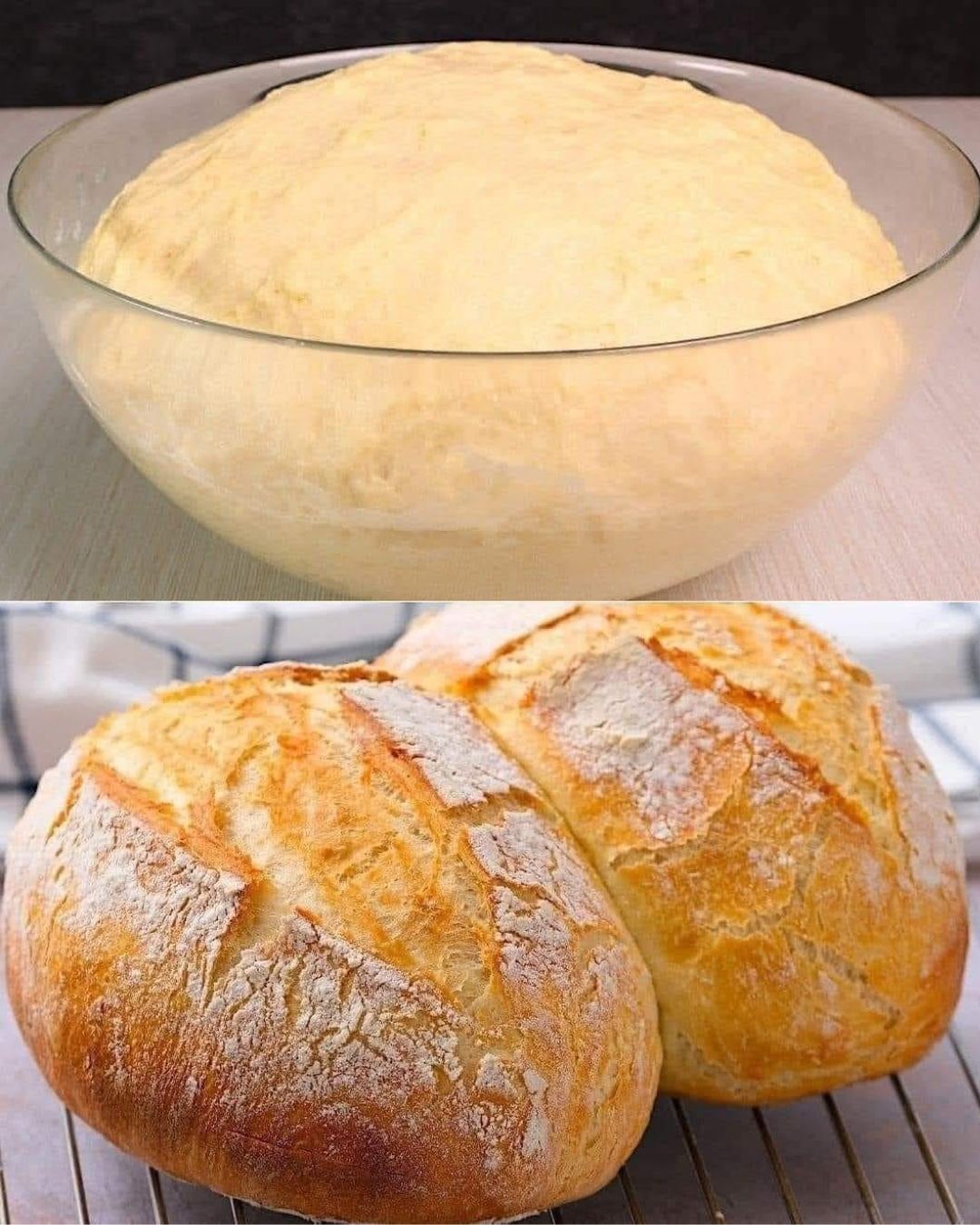This straightforward artisan bread recipe is perfect for creating a delicious loaf with a crisp crust and a soft, airy interior. Using just a few basic ingredients and a Dutch oven, you can achieve bakery-quality bread right at home.
Full Recipe:
Ingredients
- 800g wheat flour: This is the foundation of your bread. Opt for high-quality, unbleached flour for best results. Bread flour can also be used for a slightly chewier texture.
- 540g water: Provides the necessary hydration to develop the dough. Use room temperature or slightly warm water for best results.
- 25g salt: Enhances the flavor of the bread and helps to strengthen the dough structure. Avoid using iodized salt as it can affect yeast performance.
- 7g dry yeast: This is the leavening agent that helps the dough rise. Ensure your yeast is fresh for optimal results. You can use active dry yeast or instant yeast.
Method
1. Prepare the Dough:
- Combine Dry Ingredients:
- In a large mixing bowl, add 800g of wheat flour. Sprinkle 7g of dry yeast and 25g of salt over the flour. Mix well to ensure even distribution of the yeast and salt.
- Add Water:
- Gradually pour in 540g of water. Use a wooden spoon or your hands to mix the ingredients until a rough dough forms. The dough will be somewhat sticky, but it should come together. If the dough seems too dry, add a small amount of water. If it’s too wet, add a bit more flour.
2. Let the Dough Rest:
- Initial Resting:
- Cover the bowl with a clean kitchen towel or plastic wrap. Let the dough rest in a warm, draft-free area for about 1 hour. During this time, the yeast will ferment, causing the dough to rise and develop a light, airy texture.
- Why Resting is Important: This resting period allows the dough to develop flavor and structure. Skipping this step can result in dense bread.
3. Fold the Dough:
- Shape and Fold:
- After the dough has risen, gently press it down to deflate. Transfer the dough to a lightly floured surface. Fold the dough over itself three times, which helps develop elasticity and creates a better texture in the final bread.
- Why Fold the Dough? Folding helps to create layers in the bread and strengthens the dough’s gluten network.
4. Bake the Bread:
- Preheat and Prepare:
- Preheat your oven to 250°C (480°F). Place a Dutch oven or a similar heavy ovenproof pot inside the oven to preheat as well. This creates a hot, steamy environment that is ideal for a crispy crust.
- Transfer and Bake:
- Carefully remove the hot Dutch oven from the oven. Place the dough inside. Cover the Dutch oven with its lid to trap steam, which helps the bread rise and develop a crisp crust. Bake for 30 minutes.
- Uncover and Finish Baking:
- After 30 minutes, remove the lid to allow the top of the bread to brown. Continue baking for an additional 20 minutes, or until the bread is a deep golden brown.
5. Cool the Bread:
- Cooling Time:
- Once baked, remove the Dutch oven from the oven and carefully transfer the bread to a wire rack. Let it cool for at least 1 hour before slicing. Cooling the bread allows the interior to set properly and makes slicing easier.
- Why Cool Before Slicing? Slicing bread before it has cooled can result in a gummy texture inside. Allowing it to cool helps the crumb set and enhances the flavor.
Tips and Tricks:
- Measuring Ingredients: For best results, use a kitchen scale to measure flour and water accurately.
- Yeast Freshness: Ensure your yeast is fresh and has been stored correctly. Expired yeast can lead to poor rising.
- Water Temperature: Use room temperature or slightly warm water. Hot water can kill the yeast, while cold water can slow down the fermentation process.
- Dutch Oven Alternatives: If you don’t have a Dutch oven, you can use a similar ovenproof pot with a lid, or even a covered baking dish. If using a covered baking dish, consider covering the bread with aluminum foil.
Common Questions:
- Can I use whole wheat flour?
- Yes, you can substitute whole wheat flour for part of the white flour. However, whole wheat flour absorbs more water, so you may need to adjust the amount of water used.
- What if my dough doesn’t rise?
- If your dough doesn’t rise, it could be due to expired yeast or a cold environment. Ensure your yeast is fresh and try to let the dough rise in a warm, draft-free place.
- How do I know when the bread is done?
- The bread is done when it’s golden brown and sounds hollow when tapped on the bottom. You can also use a thermometer; the internal temperature should be around 90°C (190°F).
Enjoy your freshly baked artisan bread with your favorite spreads, or use it as a base for sandwiches and other delicious dishes!

